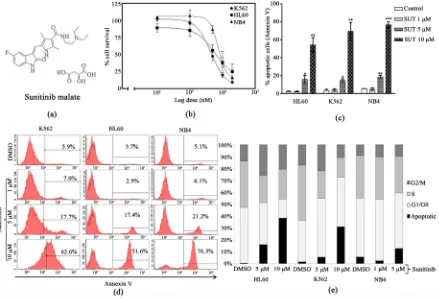Sunitinib Reduces Acute Myeloid Leukemia Clonogenic Cells in Vitro and Has Potent Inhibitory Effect on Sorted AML ALDH+ Cells
Full text
Figure


Related documents
To compare the drift of lidar measurements with that of other long-term observations, the relative drifts of SBUV(/2), SAGE II and HALOE ozone data are estimated by the
The community pharmacist reviewed repeat prescriptions on 69 different days over two years and reviewed a total of 511 repeat prescriptions with a total of 3018 items. Drug-
It’s worth a visit to experience how a trendy atmopshere and social hub is created through the stylish interior design, dim lighting and quirky graphics, signage and
The major crops grown in the low land areas of South Ari woreda are cereals (maize, sorghum, teff and pearl millet) pulse and oils(common bean, ground nut, cow pea, sesame, linseed
Comparison of ViaPure™ Boswellia and another commercial product, using reversed-phase C-18 HPLC, shows that the ViaPure™ product is much more highly refined, comprising more than
Social networks tools are used as a means of building links to business websites where an online social networking has been harnessed as an invaluable asset for many
The Supreme Court’s recent cases on patent-eligible subject matter have struggled to draw the line between unpatentable fundamental principles, such as laws of nature and
Although this assumption is the basis for the use of selected enteric bacteria as faecal pollution indicators, there is evidence to indicate that limited